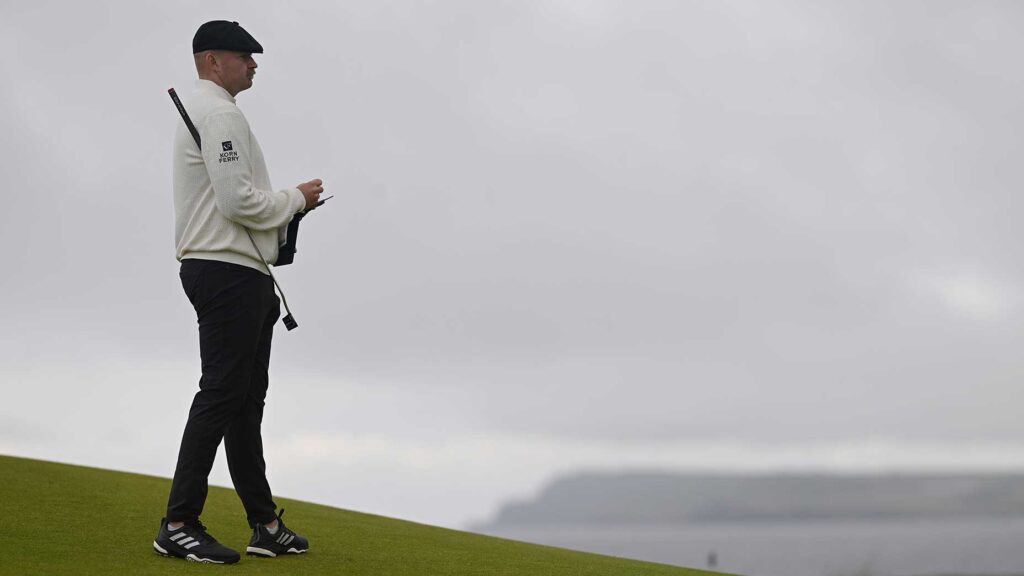Ryder Cup 2025: Analyzing the Evolution of Team Dynamics and Player Selection
The excitement surrounding the Ryder Cup is palpable, and as we approach the 2025 event, it’s clear that the dynamics are shifting in ways that echo the previous tournaments. Recent history suggests that the 2023 Ryder Cup offers valuable insights into potential outcomes for both Team USA and Team Europe. This article will explore the implications of player form, strategic choices, and how history may be repeating itself as we gear up for one of golf’s most anticipated competitions.
A Look Back: Ryder Cup 2023
In 2023, the American team showcased incredible talent, with Rickie Fowler and Jordan Spieth leading the charge during the summer months. Their strong performances, coupled with Brooks Koepka’s fifth major championship win and Wyndham Clark’s impressive rise as a newly crowned major champion, signaled an optimistic summer for Team USA. However, as the season progressed, underlying issues began to surface. Players who seemed unstoppable at their peaks saw their forms wane as the rigors of competitive golf took their toll.
The Fall from Grace
The cracks in Team USA’s armor became apparent as Fowler, Koepka, and Clark struggled during the Ryder Cup in Rome. The fatigue from a grueling summer schedule was evident, and this affected their play adversely. Justin Thomas, a stalwart of the team, disappointed with performances that fell short of expectations, leaving many to question the selections made over rising stars like Cam Young and Keegan Bradley.
Emerging Patterns: Team Europe’s Solid Foundation
Fast forward to 2025, and it appears that Team Europe is finding itself in a situation reminiscent of the American experience two years prior. With less than three weeks until the captain’s picks, the European team looks almost finalized. Unlike Team USA, where slots are still very much up for grabs, the Euros seem poised to enter the fray with confidence. DataGolf places 11 players with over a 67 percent chance of making the team, suggesting a solid foundation.
Key Players for Team Europe
The roster includes elite talents like Rory McIlroy, Jon Rahm, and Tyrrell Hatton, who have all shown consistent form. Players like Ludvig Åberg and Sepp Straka round out a formidable lineup. This year marks a potential first for Aaron Rai, a rookie whose dynamic performances have caught the attention of selectors. His presence highlights the delicate balance between established veterans and fresh talent.
The Dilemma of Selection: Experience vs. Form
However, much like Team USA’s past decisions, Team Europe seems to be facing a dilemma in its selection process. With one final spot available, the choice may come down to experience versus current form. Could veteran Justin Rose, who has played an impressive number of Ryder Cup matches, earn his place despite faltering performance metrics? This brings to light the fundamental question: Should experience take precedence over a player’s current form when selecting the final team member?
Rising Stars: The Case for Harry Hall
Enter Harry Hall, a player whose recent exploits have propelled him up the rankings. Currently sixth among European players according to DataGolf, Hall has demonstrated skill and resilience, boasting an impressive record of not missing cuts in the last five months. His game is characterized by exceptional putting, making him a compelling candidate for the final spot. Yet, the traditional favoring of veterans may leave Hall with limited opportunities.
The Impact of Pressure and Environment
As the event approaches, the nuances of the course and the competitive environment come into play. Pivotal to any Ryder Cup are the pressures of playing on foreign soil—a challenge that can unsettle even the most seasoned players. Drawing from past experiences, Team Europe must carefully consider not only the skill and form of its players but also their capacity to withstand the intense scrutiny of the Ryder Cup.
Lessons from the Past: Form is Fleeting
The case of Ryder Cup selections often leaves fans questioning the decision-making process. Form can be inconsistent, as evidenced by the performances of Koepka, Fowler, and Clark in 2023. Team Europe must be wary of relying too heavily on established stars since even top players can falter under pressure. The key to success may lie in balancing experience with the momentum of rising talents like Hall, ensuring that the final roster reflects a blend of both worlds.
A Look Ahead: Who Will Make the Cut?
As we inch closer to the final selections for Team Europe, the mounting pressure intensifies. Lutvig Åberg and Viktor Hovland’s inconsistencies, combined with Shane Lowry’s unpredictable form, raise additional questions about the final roster. With Harry Hall continuing to impress, the European captain must weigh the risks and rewards of their decisions carefully.
Conclusion: The Future Awaits
The road to the Ryder Cup is filled with twists and turns, and this year promises to be no different. With meticulous planning, strategic insights, and an understanding of historical patterns, Team Europe has a decision-making challenge on its hands that could mirror past experiences. As the clock ticks toward the captain’s picks, the anticipation builds, leaving fans to ponder: will history repeat itself once again?
As we await the announcement of the final selections, let’s hope for a thrilling Ryder Cup that showcases the best talent in golf, with narratives of redemption and triumph waiting to unfold on the grand stage.


